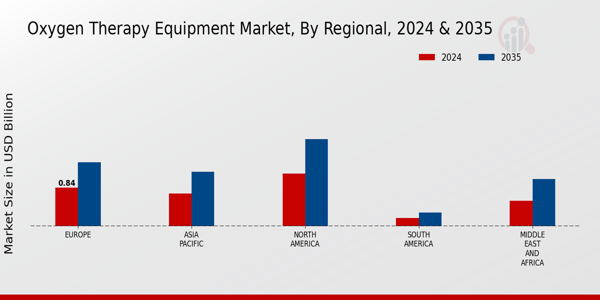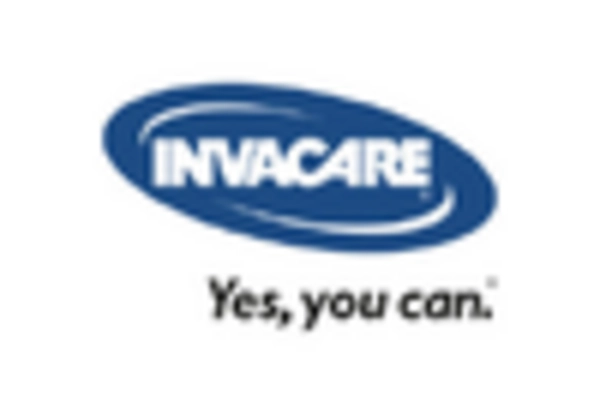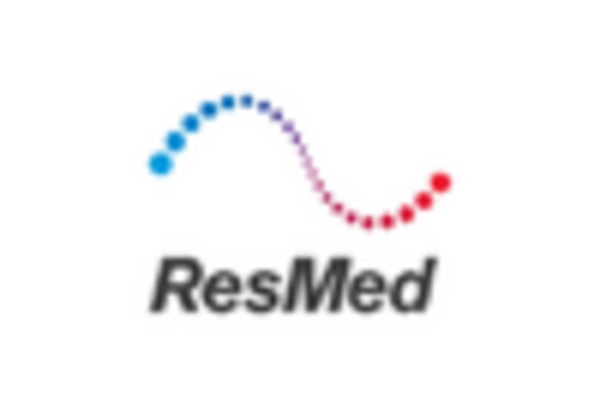The Oxygen Therapy Equipment Market has shown remarkable growth over the years due to increasing respiratory disorders and the rising number of aging populations globally. This market is characterized by dynamic competition, with numerous players engaged in developing innovative solutions to meet the increasing demand for oxygen therapy.
Strategies among these competitors often include a focus on advanced technology, effective distribution networks, and robust pricing strategies to capture a larger share of the market. Additionally, factors such as regulatory compliance, market access strategies, and collaborations with healthcare providers are crucial in defining the competitive landscape.
The ongoing investment in research and development, coupled with enhanced production capabilities, has enabled companies to introduce an array of products encompassing portable oxygen concentrators, stationary oxygen concentrators, and liquid oxygen systems, thereby diversifying the offerings available for patients and clinicians.
Within this competitive landscape, Invacare has established a strong presence in the Oxygen Therapy Equipment Market, leveraging its extensive experience and expertise in providing durable medical equipment. Known for its high-quality oxygen delivery systems and patient-centric approach, Invacare has consistently focused on enhancing user experience through improved product design and functionality.
The company’s strengths lie in its comprehensive product portfolio, which includes a variety of oxygen concentrators and related accessories, as well as its commitment to innovation and quality. By prioritizing customer engagement and establishing strategic partnerships, Invacare has succeeded in building a loyal customer base, enhancing its market reach, and ensuring competitive pricing strategies.
Their ongoing investment in new technologies further amplifies their market position, allowing them to respond efficiently to emerging trends and patient needs. Drive DeVilbiss Healthcare also plays a significant role in the Oxygen Therapy Equipment Market, recognized for its dedication to producing effective respiratory therapy solutions.
The company offers a range of products, including oxygen concentrators, nebulizers, and other essential devices that cater to patients with varying needs. Drive DeVilbiss Healthcare’s key strengths include its well-established distribution channels and its focus on customer service, ensuring that high-quality products are readily accessible to healthcare providers and patients worldwide.
The company has been proactive in forming strategic partnerships and engaging in mergers and acquisitions, further strengthening its market presence. By continuously investing in product development and technological advancements, Drive DeVilbiss Healthcare demonstrates a robust approach to maintaining leadership in the market, aiming to enhance patient outcomes through innovative solutions within the global landscape of oxygen therapy.


















Leave a Comment